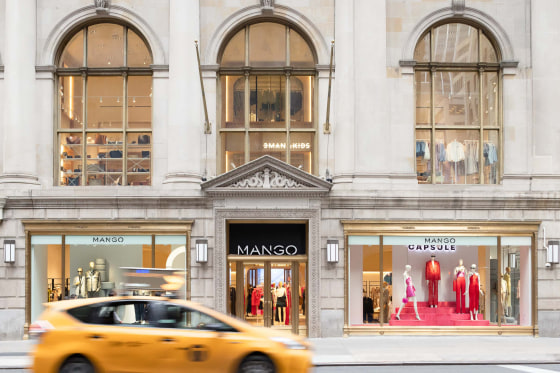
In an attempt to change its reputation as a fast-fashion store and establish itself as a high-end brand, Spanish retailer Mango is launching a daring expansion strategy in the United States.
In an interview with CNBC, Mango CEO Toni Ruiz stated that the privately held company, which has its headquarters in Barcelona, intends to establish 42 new outlets in the United States by the end of the year and 20 more in 2025, mostly in the Northeast and Sun Belt.
By next year, the company will have 1,200 employees in the United States thanks to the $70 million growth plan, which also includes a new logistics center outside of Los Angeles and roughly 600 additional employment.
According to Ruiz, this is a long-term commitment. He added, “We also have the opportunity to have bigger stores in the U.S.” Mango plans to open a few multiline stores with merchandise for men and children.
Mango’s U.S. sales increased by over 10% this year, and the company anticipates double-digit growth in the upcoming year.
At the moment, Mango’s native base in Spain is its biggest market. Although the U.S. is one of its top five markets, the corporation wants to increase sales there in order to overtake the top three. The objective is a component of Mango’s broader strategic strategy, which aims to increase revenues from roughly 3.1 billion euros a year to 4 billion euros by 2026.
Mango, which is well-known for its stylish, European basics, wants to show customers that it is a high-end brand and not a fast-fashion one. Everything is designed in-house in Barcelona, and the process takes seven to eight months, according to Ruiz.
We have all of the designs, patterns, and fittings in-house; this is crucial to us, thus everything is completed here. According to Ruiz, we also have 500 employees who handle the product from start to finish. Our goal is to raise. Elevate, what does that mean? We believe that this originality, this design, and this personal flair are really appreciated by our client. For this reason, we are making a lot of effort to improve not just the quality and style but also the costs. because we are improving our proposal.
Mango’s U.S. expansion goals, according to Ruiz, are centered on stores since having a physical presence will enable the business to communicate with customers more effectively and convey its narrative in a fresh way.
The business is one of several foreign rivals that have looked to the U.S. market for expansion, including Japan’s Uniqlo, Sweden’s H&M, and Spain’s Zara. According to a Lending Tree study, the average American household spends over $2,000 a year on clothing, thus they are all vying for their business.
With the help of e-commerce data, Mango has launched stores in Massachusetts, Pennsylvania, and Washington, D.C., but it is now focusing on the Sun Belt for its next stage of expansion.
According to Ruiz, Mango’s website currently accounts for roughly 33% of total sales and assists the retailer in identifying the sources and products of its clientele.
“We have realized that every state in the United States is like a country in Europe, so it’s a big challenge for us because of the customer and the way they dress,” Ruiz said. Knowing how the states differ from one another is crucial. For this reason, we attempt to go gradually.
More from CNBC:
-
Warren Buffett suggests all parents do one thing before they die, regardless of their wealth
-
At 17, he bought a sandwich shop for $125,000 now it s Jersey Mike s and he s a billionaire
-
The salary Americans say they need to feel successful at every age it s over $500,000 for Gen Z
Note: Every piece of content is rigorously reviewed by our team of experienced writers and editors to ensure its accuracy. Our writers use credible sources and adhere to strict fact-checking protocols to verify all claims and data before publication. If an error is identified, we promptly correct it and strive for transparency in all updates, feel free to reach out to us via email. We appreciate your trust and support!
